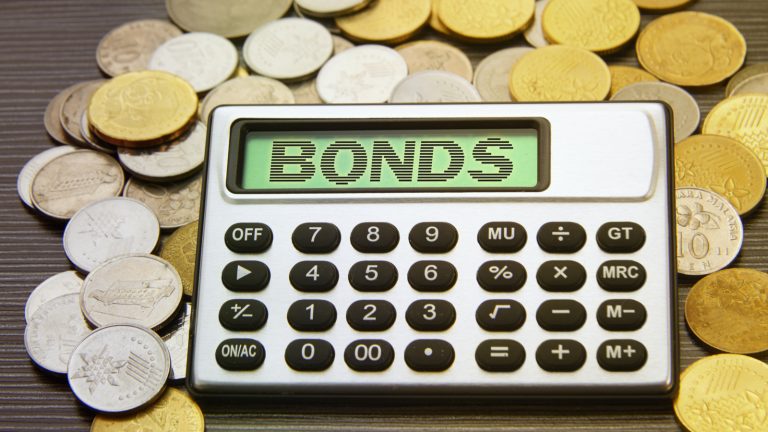Bond ETFs are a fickle bunch. Inverted yield curves mean many of the biggest options saw massive drawdowns this year. The iShares 20+ Year Treasury Bond ETF (NYSEARCA:TLT), for example, has lost more than 16% since January. Worst, it’s returned a nearly 25% loss over the past five years.
But short-term bond ETFs capitalize on the short end of the yield curve. At the same time, they offer price stability, as the underlying bond value is more stable compared to longer-maturity peers. At the same time, rate hikes push their yield sky-high, in many cases beyond the best high-yield savings accounts.
Ultimately, diversifying into a series of short-term bond ETFs can help protect your capital while offering greater income opportunities and shielding against inflation. These three bond ETFs offer a variety of risk profiles, yield and even tax advantages for discerning investors.
iShares 0-5 Year High Yield Corporate Bond ETF (SHYG)

Expense ratio: 0.30%, or $30 annually on a $10,000 investment
iShares 0-5 Year High Yield Corporate Bond ETF (NYSEARCA:SHYG) is the best junk bond ETF on the market today, but many aren’t capitalizing on its inherent opportunity.
Right now, high-yield corporate bonds (junk) bonds aren’t getting the love they deserve from retail investors. In some ways, it’s easy to see why. Junk bonds usually correlate closely with stocks, and “safe” fixed-income bond ETFs still yield north of 4%. But that’s a mistake on two fronts.
First, while junk bonds have greater credit risk than Treasury bond ETFs, a well-managed basket of those bonds like SHYG boasts diversifies that risk and still represents quality companies. SHYG’s holdings include American Airlines (NASDAQ:AAL) and TransDigm Group (NYSE:TDG) bonds. While these, and other, companies are more sensitive to economic and business cycles, SHYG offers exposure to these riskier — but stable — stocks without directly investing.
At the same time, the yield curve still favors the short end. This means short-term junk bonds will keep pushing high yields into investor pockets. True to form, SHYG’s current 30-day SEC yield is a whopping 9.08%. But, slowly, the yield curve is returning to normal. As yield begins favoring the long end, short-dated bonds will begin increasing in value (since yield and price move inversely) and your existing SHYG holdings will begin skyrocketing. If you invest in SHYG and reinvest its massive yield, you’re building a position staged to balloon once the Fed definitively stops rate hikes.
iShares 0-3 Month Treasury Bond ETF (SGOV)

Expense ratio: 0.13%, or $13 annually on a $10,000 investment
iShares 0-3 Month Treasury Bond ETF (NYSEARCA:SGOV) is easily the best alternative to even the highest-yielding savings accounts. Offering tax advantages over those income-producing accounts, SGOV also beats nearly every yield available to consumers. It’s currently sitting at a 5.17% SEC yield. That’s close to 20 basis points better than most of the savings accounts in today’s market. At the same time, since the Treasurys within SGOV are so short-dated, the per-share price is remarkably stable and doesn’t expose you to as much principal risk as yield curves rebalance.
You might be keeping cash on the sidelines to snatch blue-chip stocks up when they’re on sale. Maybe you’re shielding your net worth against further legs down in the overall market. Maybe you aren’t comfortable building your own bond ladder. Even if you’re just looking for an alternative emergency savings option, keeping cash in SGOV is one of the highest-yield, stable, and most liquid bond ETFs available.
iShares Short-Term National Muni Bond ETF (SUB)

Expense ratio: 0.07%, or $7 annually on a $10,000 investment
Finally, iShares Short-Term National Muni Bond ETF (NYSEARCA:SUB) offers high yield alongside tax benefits for those eyeing next year’s annual filing. SUB’s 30-day SEC yield is somewhat low, considering the alternatives, at 3.67%. But, since SUB invests in municipal bonds maturing between one month and five years, you capitalize on these fixed-income assets’ tax benefits. In general, municipal bond interest income is exempt from federal income tax. So, if you’re keeping a ton of cash on the side and want to retain as much interest income as possible, avoiding taxes through this strategy can help retain your net worth.
At the same time, SUB’s per-share price is as stable as SGOV in most cases. Over the past year, SUB’s per-share price returned 0.46%. That might mean limited capital gains, but you get the benefit of pure stability (while helping avoid capital gains taxation when you sell). The stock’s price with dividend grew 2.22%, which leaves you with two options. First, you can reinvest those dividends to increase your position through compound gains. Alternatively, since those distributions are largely tax-free, you can use them as a piggy bank rather than reinvesting and relying on them as pure income to spend or reinvest in other stocks or bond ETFs as part of a dollar-cost averaging strategy.
On the date of publication, Jeremy Flint held a long position in SGOV. The opinions expressed in this article are those of the writer, subject to the InvestorPlace.com Publishing Guidelines.
